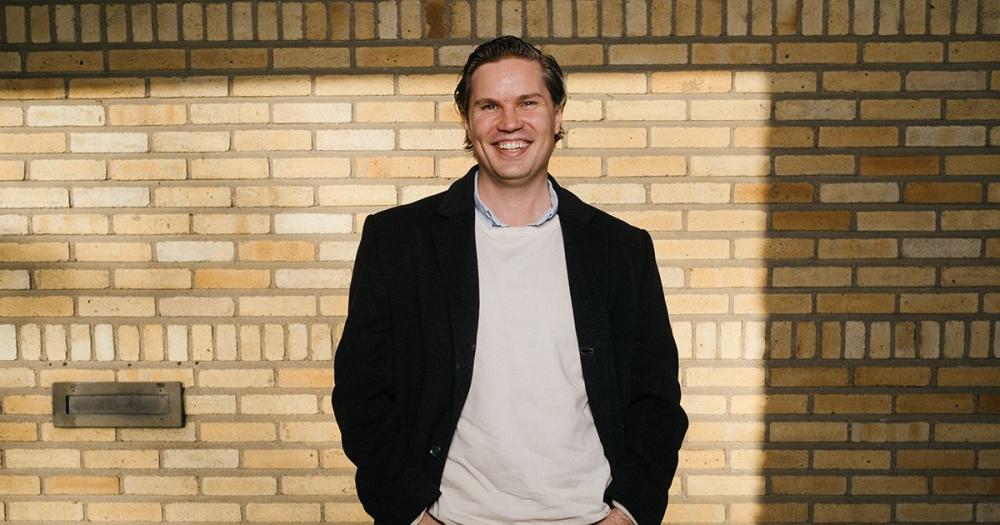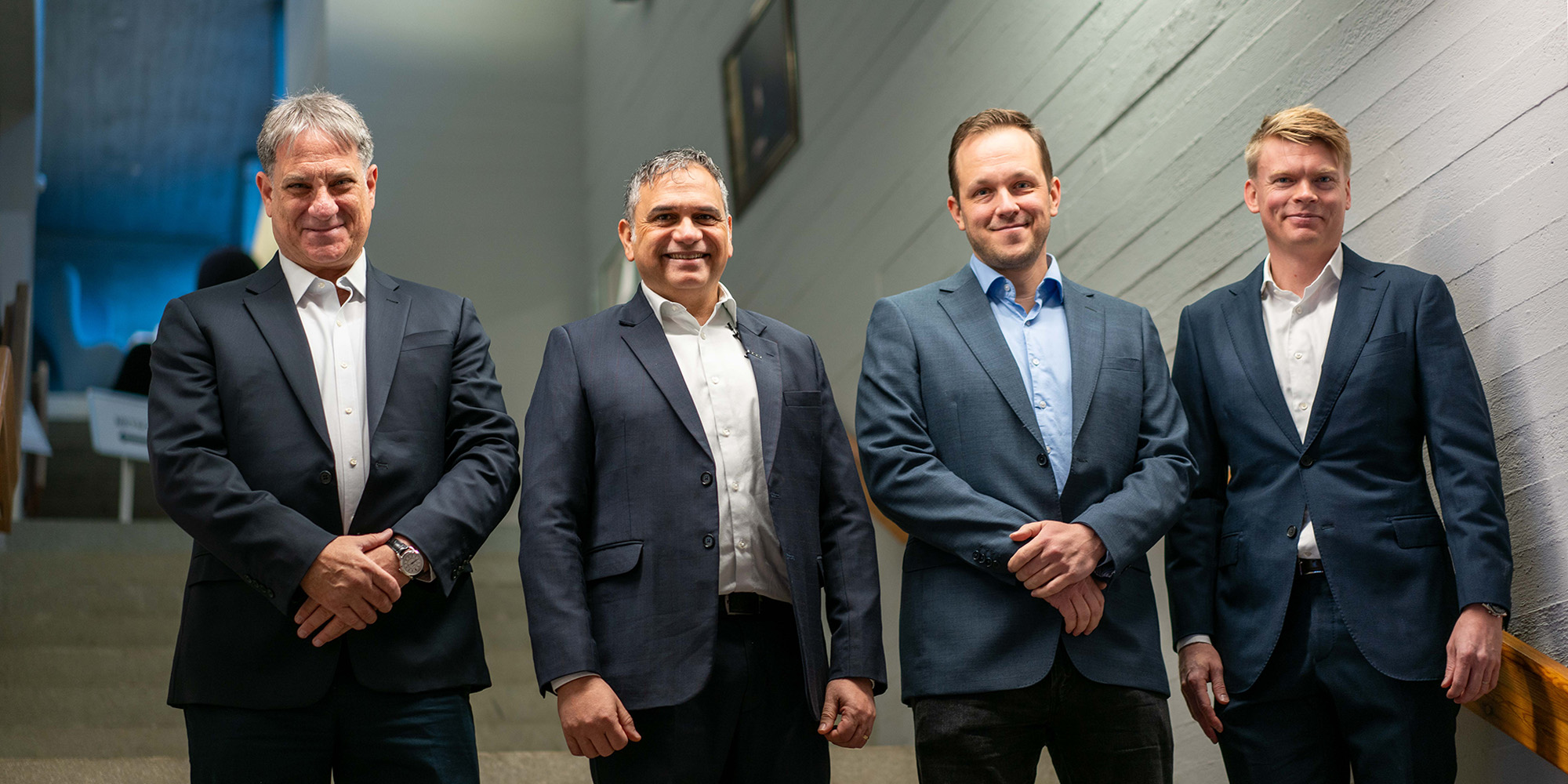New challenges. Time to move on. A difference of views. Family reasons. A suitable successor came along. Fulfilling a dream. An offer too good to pass. The company leaping into a new stage. Burnout. Bonus date attained. Headhunted by a competitor. On a daily basis, headlines tell a message that directors come – and go.
According to a study from 2018 by the Finnish Chamber of Commerce, the average tenure of a CEO in a Finnish public company is 5.1 years. The same average length applies to CEOs in the world’s 2,500 largest companies in the last decade, according to consulting company PwC. The term has shortened from an average of eight years at the beginning of the 2000s.
In older, slower times, CEOs had decades to grow and refine themselves along with the company. Now, the market and operating environment are so fast-paced that directors have a hard time keeping up. Long-term CEOs have to either be exceptionally adaptable or surrounded by a power team that does the adapting for them.
Timo Vuori, Assistant Professor, Strategic Management, at Aalto University, researches the way companies form and implement strategies. He is also a seasoned corporate consultant.
Choosing a CEO is one of the most important strategic decisions a company makes."
”The globalized market means people are moving around and changing jobs more than before, which, in order to survive, fuels a need for companies to pay increasing attention to who they appoint as directors”, says Vuori.
These days, CEOs are often chosen for extremely clearly defined roles.
Choosing a CEO is one of the most important strategic decisions a company makes.
It requires the board to possess in-depth industrial knowledge, clear-cut strategic thinking, and relationship skills. “A rational model involves explicitly defining the characteristics required from the director before examining the candidates against the criteria”, Vuori explains.
Top business consultant Ram Charan, who has mentored some of the world’s biggest companies for decades, has defined four ways for a board to succeed in picking the right CEO. Here’s his list:
- Boards need to thoroughly examine and consider the key characteristics for the role.
- Candidates should not be eliminated based on their background.
- Boards must have in-depth understanding as to which candidates best fit the whole.
- Candidates must not be expected to be perfect.
In theory, the list sounds simple, but in practice, choosing a director is a tough job that involves finetuning a multidimensional puzzle.
”It’s the ideal model”, says Timo Vuori. ”In reality, the process is influenced by impressions and networks. The selection committee tends to favor characteristics it possesses itself. It’s also easier to listen to the recommendation of someone you know over that of a stranger. It’s cognitive biases like these.”
Cognitive biases are surprisingly resilient, and studies show they are easily slipped into even if we are aware of them.
A good example of cognitive bias is a situation where the board or executive management of a company is made up of people with a similar educational background. Likewise, people might sincerely think all the potential candidates just happen to be men or of a certain nationality. It may be fun to lead a group of friends, but it might also be an echo chamber that obstructs a clear and diverse view of the world – the company’s operating context.
According to a report by the Finnish Chamber of Commerce, only 19 per cent of new CEOs in Finnish public companies were appointed internally in 2018.
It might be because recruiting from the outside is in fashion, but also down to failing to raise new leaders in-house. Systematic business development has always been at the core of companies. HR policy – or talent management to be more specific – has on the other hand become a priority only in recent years.
During her current role as consultant and partner at executive search company Amprop, Pii
Kotilainen has managed 100–120 recruitment processes. She says that in an ideal situation, a company has such a good pool of people at its disposal as it is that it can decide separately when it makes strategic sense to recruit from the outside. “A situation like that isn’t easy to achieve, though. I’ve only witnessed it once”, says Kotilainen.

There are still large companies that do not take systematic care about talent management. It’s odd considering companies are so eager to repeat that people are the company’s most valuable resource.
What does talent management mean exactly?
Riitta Lumme-Tuomala, Head of Growth at Aalto University Executive Education, has a doctorate in talent management. She defines it as: strategic thinking on how to get the right person in the right place at the right time. Pii Kotilainen talks about charting dynamic competencies. Timo Vuori from Aalto University says talent management is intended to result in people in the organization doing what’s needed as well as possible. This includes updating skills.
According to PwC, CEO turnover hit 17.5 per cent in the world’s 2,500 largest companies in 2018. It’s a record high. Times are turbulent at the top.
When does it make sense to switch CEOs?
There can be many reasons, and a switch doesn’t always help in tough times. An eye-catching dismissal and messianic appointment of a new leader can also be a panic reaction taken too far.
”Updating one’s competence may be a better way”, says Vuori.
Riitta Lumme-Tuomala reminds that the stardom of a leader bought with big money to save the day isn’t necessarily transferred from one organization to another. A study conducted in the US found that the performance of heart surgeons varies when they move to another hospital. In other words, the results of their work vary even though the person and operation stay the same. “Leadership is tied to the context”, Lumme-Tuomala explains. “The organization’s mission, structure, culture… It all has an effect.”
Despite a switch of CEOs not always being the right medicine for problems, Timo Vuori does feel typically companies wait too long before changing leadership. It is difficult to determine the exact right time to do it, though. A board stuck in its ways doesn’t recognize a need for change, but if it is up with the times, it will grasp what characteristics a new CEO needs to possess for the time at hand.
Choosing the right leaders should be an ongoing process."
If the organization is serious about talent management, choosing the right leaders should be an ongoing process. For example, each board meeting could involve taking a look at a list of five people according to certain criteria. The question is: what characteristics does the organization need from a leader in this particular situation?
When a process is anticipatory without an acute need, it is proactive. A reactive process begins when the company is already in bad shape and there is less choice. Vuori thinks proactive talent sourcing is talked about a great deal but isn’t often systematically applied. Systematic successor planning does not mean constantly questioning current management, but an ongoing, proactive process teaches corporate management to discuss people, which is important. An ability to talk about people is worth its weight in gold when crisis strikes and cannot be developed if a crisis is the only time it is discussed.
Talent management is systematic and ongoing.
It is a key part of the company strategy, with the aim to support the strategy execution. Recruitment expert Pii Kotilainen suggests using talent review as a tool, which involves corporate management strategically analyzing the skills and suitability of personnel in relation to business needs. The focus is on the future and on defining the potential of the company and staff.
Also Riitta Lumme-Tuomala pays attention to the time dimension in determining suitable candidates.
”Do we look at performance, i.e. backwards? Or potential that stretches forward?
Formal competence and a rock-solid CV are established practices for determining the right candidate but can lead astray especially in rapidly developing industries.
Lumme-Tuomala believes that ”fact-based engineer directors” are interested in what is and has been. They see hindrances and facts. Intuitive leaders see opportunities.
”Efficient leadership requires flexibility, delegation skills, proactiveness, and contextual insight”, Lumme-Tuomala outlines. It also takes humility and faith in others. Otherwise there is no trust.
The world is changing at such a fast pace that companies do not necessarily understand what skills are needed.
That is why Lumme-Tuomala thinks potential plays a crucial role.
”Forget about lengthy lists of competencies and make sure the person has meta competence instead: emotional intelligence, smartness, an ability to learn, and agility”, Lumme-Tuomala encourages.
Here lies one of the secrets behind profitable talent management: instead of past performance, focus on the future – potential.
Talent management is the key, as the 21st century is a century for talents."
”Talent management is the key, as the 21st century is a century for talents; people who know how to solve problems”, Lumme-Tuomala describes.
According to Pii Kotilainen, talent management is on the rise also because leadership processes are no longer about going with the flow in a “I like you” type of way, but about striving for objectivity and transparency.
Companies are well aware that they won’t manage without the right people and skills.
But an awareness alone isn’t enough. Lumme-Tuomala says “you need to dare track down” the right skills – find the potential.
”In practice it means seeing promise in someone and placing them in situations that bring completive advantage to the company. You pay more attention to them – and also expect more from them than others.”
According to Lumme-Tuomala, an entire organization cannot be filled with talent. According to her, also employees who keep up the company’s competitive edge are key persons, whereas talents create competitive edge and grow possibly into leaders or become experts positioned in strategic key positions.
Timo Vuori thinks an ability to work across different industries is important in leadership, as borders between sectors become increasingly blurred. Creating new combinations can bring a great deal of added value. In today’s world, there is a demand for leaders who are able to bring together different types of people. Professional leaders can do well in a field that’s new to them if they are surrounded by a good team.
A need to transform the industry and business is often a reason to switch CEOs.
”Often, organizational renewal requires a reshuffle of people. When a sector is going through transition, former management may not be totally familiar with new technology or competition, so a leader with the right understanding and skills is needed.”
It’s not even necessarily about an understanding, but about interaction; how people work together. Lauri Järvilehto is Professor of Practice on the Aalto Ventures Program at Aalto University. He is also a startup entrepreneur, philosopher, consultant specialized in working life, and author of books on leadership. According to him, a large-scale organizational reform can require new people. “If an organizational reform is carried out with the same people, there will be no significant change.”

Companies often turn to consultants to help define potential and recruit management. Consultant Pii Kotilainen sees a leader leaving the top always as a new opportunity. She recommends kickstarting the recruitment process of a new leader by outlining the business context. She highlights the importance of management and the consultant having an in-depth understanding of the situation and culture of the company.
”It’s worth thinking about the strategy and organization. When someone leaves, it may for instance be possible to combine units.”
Initial conversations are about ensuring an understanding of the type of person needed. Consultants are also sparring partners for management in figuring out the role of the future leader.
”Companies are getting better at grasping what type of director they need.”
When the relationship with the client is built on trust, the consultant can also add out of the box candidates to the list.
The required level of seniority determines whether the company is after a rising star, someone exactly at the height of their career, or an experienced senior. They all have their good points.
Kotilainen debunks the persisting idea that women over forty would no longer be in the game.
Age is not such a big deal these days. A desire and ability to learn are what count."
”It’s not true by any means. Age is not such a big deal these days. What is crucial is a desire and ability to learn as well as the time dimension: the candidate being able to take charge of the role for 3–5 years”, says Kotilainen. Sometimes, a less senior person is sought to add diversity and a longer perspective to a rather homogeneous, agewise senior top team.
According to Kotilainen, a challenging business situation or crisis shouldn’t be concealed from candidates, as it can actually be a useful way to sift out potential ones. Similarly, a candidate shouldn’t hide tough spots or shortcomings. In fact the opposite is true: experiencing a bankruptcy or other major crisis can turn the tables in favor of the candidate. After the financial crisis, a number of companies have arisen that have only seen a continuous rise without a clue about harder times. If a company like that is equipped with a smart board and management, it will make sure to hire leaders who have been through the mill, as there will be trouble sooner or later.
In other words, the economic cycle determines the right leadership style.
”Five years ago, the transformation meant reorganization, optimization, and cuts. When a company is in problems, the time perspective shortens. Now, the time perspective has lengthened again”, Pii Kotilainen has noticed.
The upswing has lasted so long that transformation is now sought strategically rather than by force. This situation requires directors who inspire change. The need for change is obvious in the middle of a crisis. It’s more demanding for a director to implement change proactively before times are hard.
Enjoyed this long form? If yes, you can find more long forms here. You can also order Aalto Leaders' Insight Highlights newsletter to your email to enjoy the fresh stories as well as invitations to free webinars. See more information below.






















